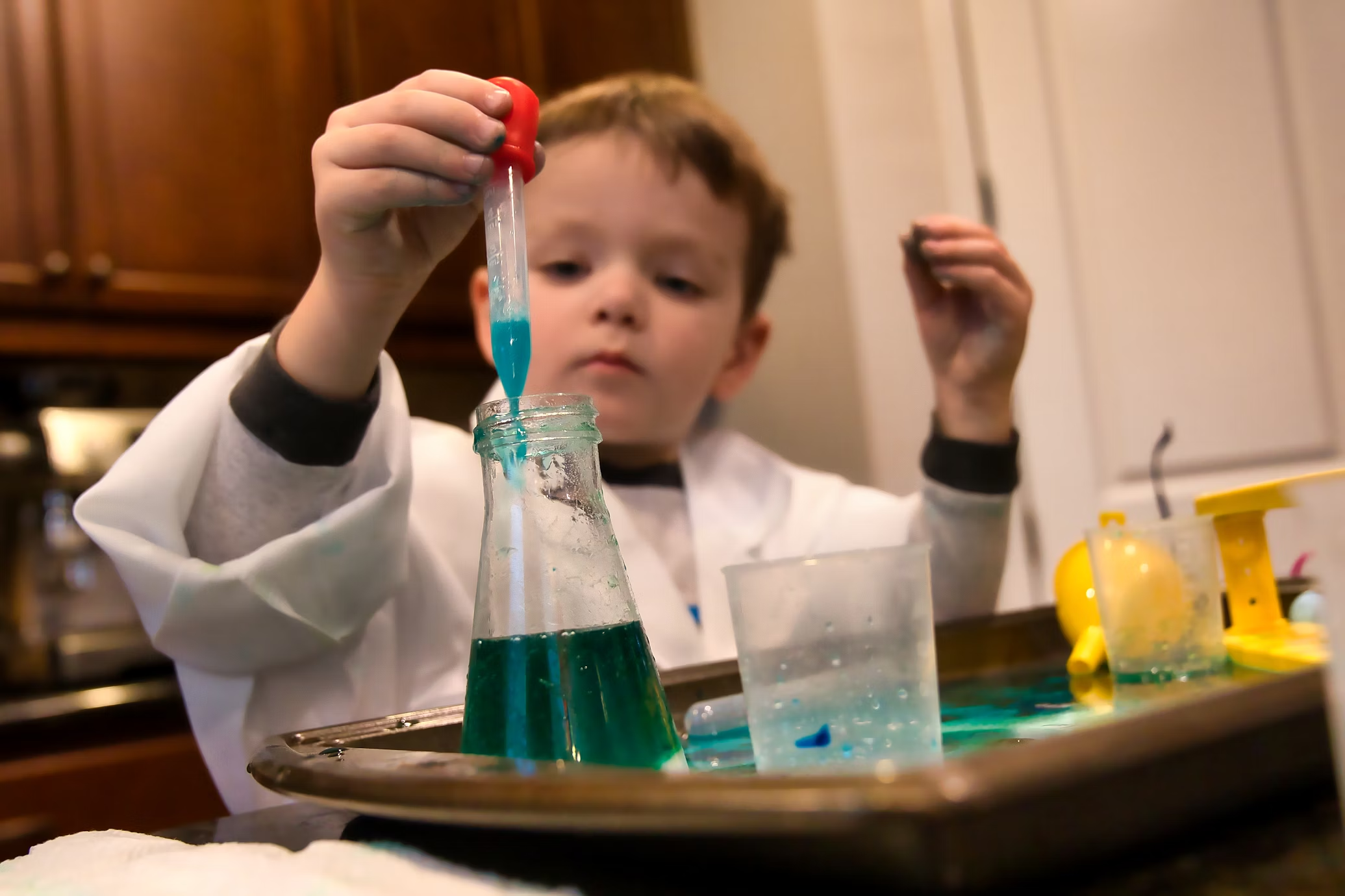
Introducing STEM (Science, Technology, Engineering, Math) activities in early childhood can spark a lifelong love of learning. For daycare centers, incorporating STEM-focused activities is not only fun but also vital for developing critical thinking, creativity, and problem-solving skills in young children. These activities can easily extend to the home environment, offering parents an excellent way to engage their little ones in meaningful, hands-on learning.
Why STEM is Important for Young Children
STEM education goes beyond just teaching facts. It encourages children to ask questions, explore, and experiment. Here are some of the benefits of incorporating STEM activities in early childhood:
- Encourages Curiosity: Young children are naturally curious. STEM activities nurture this curiosity, encouraging them to explore the world around them.
- Develops Problem-Solving Skills: By engaging in experiments and challenges, children learn how to think critically and solve problems creatively.
- Builds Early Math and Science Skills: Hands-on activities lay the foundation for more complex concepts in the future.
- Fosters Creativity: STEM isn’t just about numbers and equations; it’s about thinking outside the box, which can enhance creativity.
Simple STEM Activities for Daycare Centers and Home
Here are some easy-to-implement STEM activities that daycare centers can use, and parents can try at home to inspire their little scientists:
1. DIY Volcano Eruption
What You'll Need: Baking soda, vinegar, dish soap, food coloring, a small cup, and a tray.
Instructions:
- Place the small cup on a tray.
- Add 2-3 tablespoons of baking soda into the cup.
- Add a drop of dish soap and a few drops of food coloring.
- Pour vinegar into the cup and watch the “lava” erupt!
STEM Skills Developed: This activity introduces kids to basic chemical reactions. It’s an exciting way for them to learn about cause and effect while encouraging observational skills.
2. Building Structures with Marshmallows and Toothpicks
What You'll Need: Mini marshmallows (or play dough) and toothpicks.
Instructions:
- Give children a pile of marshmallows and toothpicks.
- Encourage them to create various shapes and structures like houses, bridges, or towers.
- Discuss which structures are more stable and why.
STEM Skills Developed: This activity enhances engineering and spatial reasoning skills. It teaches kids about geometry, balance, and the basics of construction.
3. Sink or Float Experiment
What You'll Need: A large bowl of water and various small objects (like a spoon, toy car, leaf, coin, etc.).
Instructions:
- Gather a variety of objects from around the daycare or home.
- Ask the children to predict whether each item will sink or float.
- Drop each item in the water and observe the results.
- Talk about why some objects float while others sink.
STEM Skills Developed: This simple science experiment helps children understand buoyancy and density while improving their prediction and observation skills.
4. Magic Milk Experiment
What You'll Need: Milk, food coloring, dish soap, a cotton swab, and a shallow dish.
Instructions:
- Pour milk into a shallow dish.
- Add drops of different food coloring across the surface of the milk.
- Dip a cotton swab into dish soap, then touch it to the milk’s surface.
- Watch the colors swirl around as if by magic!
STEM Skills Developed: This activity demonstrates the concept of surface tension and chemical reactions. It also encourages kids to observe and ask questions about the process.
5. Balloon Rocket Race
What You'll Need: Balloons, string, tape, and a straw.
Instructions:
- Thread a long piece of string through a straw and tie the string between two points (like two chairs).
- Blow up a balloon (but don’t tie it) and tape it to the straw.
- Release the balloon and watch it zoom along the string.
STEM Skills Developed: This activity teaches principles of physics, such as force, motion, and air pressure, in a fun and engaging way.
6. Rainbow in a Jar
What You'll Need: Honey, dish soap, water, olive oil, rubbing alcohol, food coloring, and a clear jar.
Instructions:
- In a clear jar, layer the liquids in the following order: honey (bottom), dish soap, colored water, olive oil, and colored rubbing alcohol.
- Watch as each liquid forms its own distinct layer.
STEM Skills Developed: This experiment helps kids understand the concept of density, as each liquid has a different weight and thus floats above or sinks below the others.
7. Nature Scavenger Hunt
What You'll Need: A list of items commonly found outdoors (like leaves, rocks, twigs, etc.) and a basket or bag.
Instructions:
- Create a checklist of nature items for children to find.
- Take the children on a scavenger hunt in the garden or park.
- Discuss the different textures, colors, and shapes they found.
STEM Skills Developed: This activity fosters observation, classification, and environmental awareness, as children learn about the natural world around them.
Tips for Parents and Daycare Providers
- Encourage Questions: Foster curiosity by asking open-ended questions like “What do you think will happen?” or “Why do you think that happened?”
- Embrace the Mess: Many STEM activities can be a bit messy. Embrace it as part of the learning process.
- Celebrate Trial and Error: Let children experiment, even if they don’t get it right the first time. This builds resilience and a growth mindset.
- Make It Fun: STEM activities should feel like play. The more fun it is, the more engaged children will be.
Incorporating STEM activities in daycare centers and at home provides a strong foundation for children’s future learning. These hands-on activities are not just educational but also encourage exploration, creativity, and critical thinking. By nurturing a child’s natural curiosity, we help them become lifelong learners and problem-solvers.
Whether you’re a daycare provider or a parent, these simple and fun STEM activities are a great way to inspire the next generation of little scientists!
